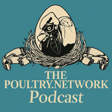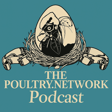
EP 17 Elanco: Turning ESG intent into measurable broiler performance gains
In this episode of the Sustainability Hub podcast, host Tom Willings is joined by three veterinary voices connected to Elanco Animal Health: Jackie Skelly (Head of Veterinary Technical Services, UK & Ireland and ESG lead), George Gould (Technical Advisor, International Poultry Team) and George Tice (former Elanco leader, now consultant after 28 years with the company).
Together, they map the practical route from ESG intent to on-farm results.
The discussion opens by grounding ESG in the realities of European and UK regulation: net-zero trajectories, corporate sustainability reporting, due diligence duties and finance-sector disclosure frameworks.
The message is that measurement and reduction will be expected across supply chains, not just corporate offices.
From there, the panel reframes poultry’s opportunity. Chicken already delivers ~30% of global animal protein while accounting for a materially smaller share of livestock GHGs.
Yet scale and scrutiny demand continuous improvement across three pillars – economic viability, animal welfare, and environmental footprint – without “solving” one by inflating the others.
That trade-off mindset is replaced with a systems view: define the target precisely (FCR, welfare KPIs, carbon intensity), then choose interventions that move multiple pillars in the right direction.
A critical insight for operators: 70–80% of a broiler’s carbon footprint sits in feed, and ~80% of emissions occur off farm.
Energy tweaks at the house may help resilience and costs, but carbon outcomes are won primarily through feed formulation and feed efficiency.
Elanco frames its response as “inside the bird” (gut health and disease control that improve FCR) and “outside the bird” (formulation decisions that reduce the embodied carbon of the ration).
Two technology tracks illustrate this. First, Hemicell (a beta-mannanase) breaks down beta-mannans that otherwise trigger a costly feed-induced immune response and raise digesta viscosity.
By sparing energy and improving intestinal integrity, nutritionists can remove ~60 kcal from the matrix and maintain performance, enabling the substitution of higher-carbon fats/oils while maintaining output.
Independent, ISO-aligned lifecycle assessment and modelling against representative European diets indicate ~2.5–3% reductions in carbon footprint attributable to Hemicell-enabled reformulation, alongside feed-cost benefits.
Second, Elanco’s anticoccidial programmes (e.g., Maxiban®/Monoban®) anchor coccidiosis control – a health prerequisite that also supports better FCR.
Elanco commissioned ISO-conformant LCAs on the products and then collaborated with external experts to build a product-agnostic FCR-to-carbon calculator.
Teams can input live parameters (country, target weight, feed price, baseline FCR) to estimate the carbon impact of a given FCR improvement under standard diets by market.
It’s a decision tool to rank scenarios before implementing and validating with farm-level measurement platforms (e.g., poultry-specific tools that include land-use change in feed footprints).
Elanco’s approach is to:
- Keep investing in rigorous science and third-party assurance so customers can trust claimed impacts
- Quantify hidden co-benefits of health technologies (welfare ↑, performance ↑, carbon ↓)
- Develop the next wave of innovations designed explicitly for sustainability outcomes.
For producers, integrators, nutritionists and veterinary advisors, this episode offers a practical takeaway: start where the carbon is (feed), protect gut health relentlessly, use modelling to prioritise interventions, then measure and report with defensible methods.

